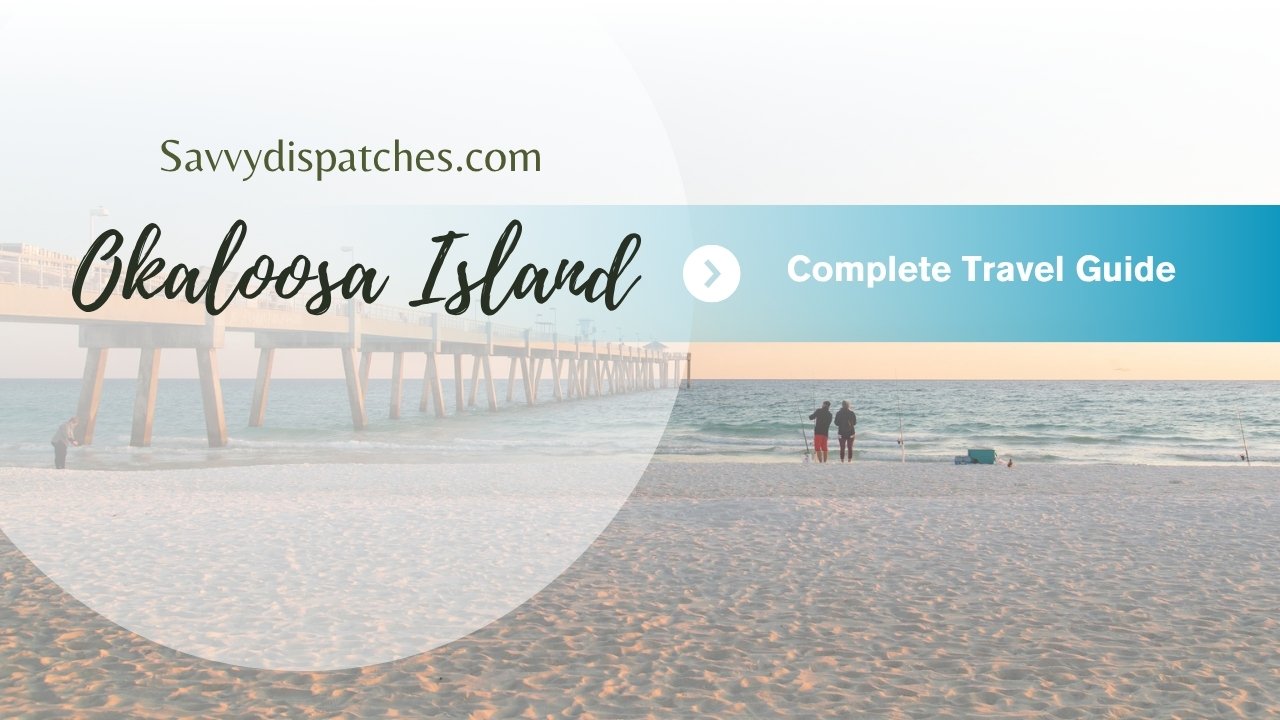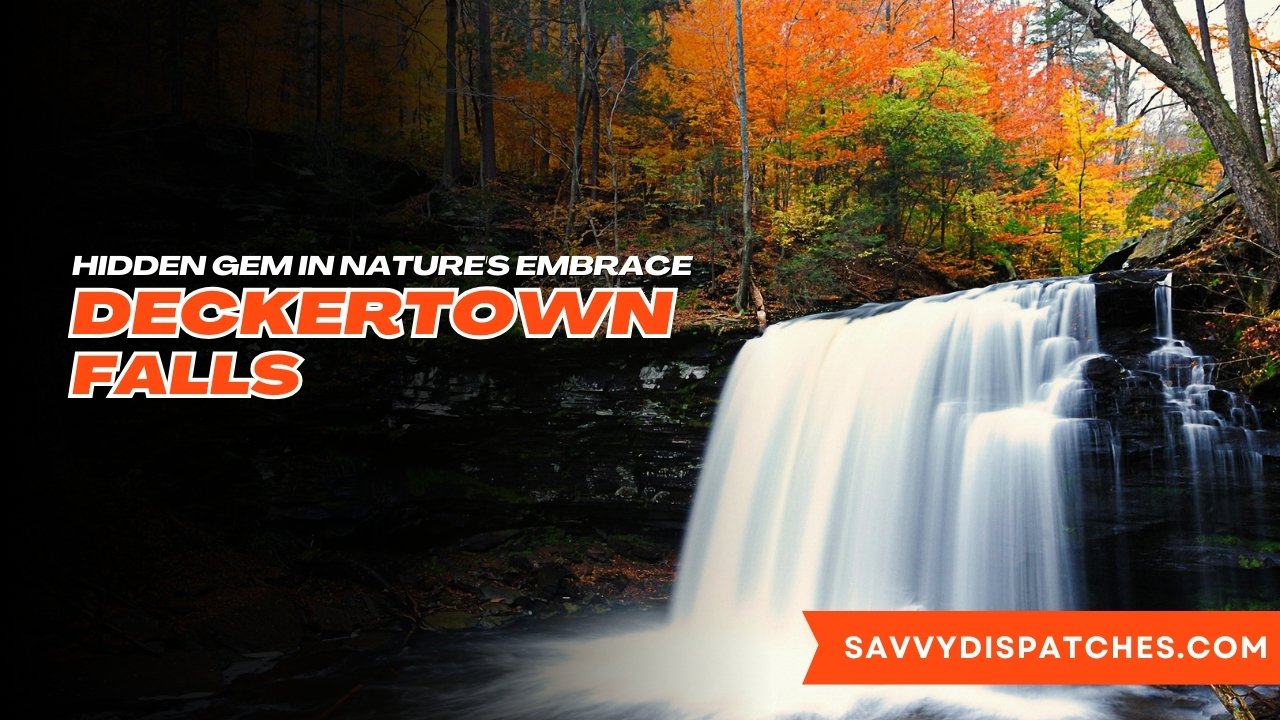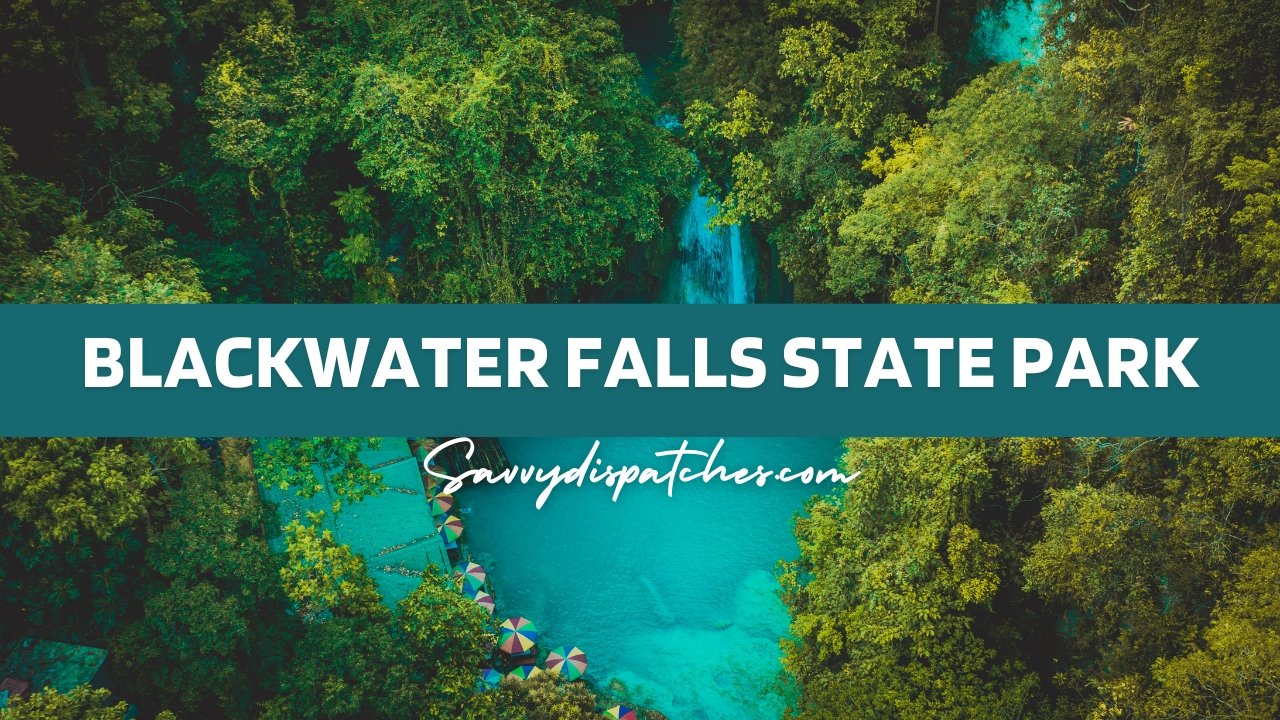Destinations
Okaloosa Island Travel Guide: The Hidden Gem of Florida

Nestled along the emerald coast of Florida’s panhandle, Okaloosa Island is a peaceful retreat offering a blend of natural beauty, modern amenities, and adventure for all types of travelers. Whether you’re a backpacker seeking budget-friendly escapes, a luxury traveler looking for serene beaches, or a family in search of fun-filled activities, Okaloosa Island has something for everyone. Known for its stunning white-sand beaches, crystal-clear waters, and laid-back atmosphere, this coastal destination offers more than just a beach holiday—it’s a place where nature and adventure meet. Let’s explore why Okaloosa Island is quickly becoming one of the best-kept secrets in Florida.
Best Time to Visit Okaloosa Island: Seasonal Breakdown
Okaloosa Island is a year-round destination, but the experience varies depending on when you visit.
Spring (March – May): Perfect for those who want to avoid the summer crowds while still enjoying warm weather. Temperatures range from 60°F to 80°F, ideal for outdoor activities, festivals, and beach time.
Summer (June – August): Peak season. Expect hot temperatures (80°F to 95°F), especially for beach lovers and families. It’s the best time for water activities, but also the busiest and most expensive.
Fall (September – November): A quieter time to visit. Temperatures are mild, and the summer crowds start to dissipate. Hurricane season may affect the weather, but it’s less crowded and offers excellent deals.
Winter (December – February): The off-season. The weather is cooler (50°F to 70°F), but it’s the perfect time for travelers seeking peace and solitude. Prices drop, and many attractions remain open, but some water activities may be limited.
Top 10 Must-Visit Attractions
Okaloosa Island Beaches
The island’s beaches are among the best in the country. White sand, clear blue waters, and a calm atmosphere make it a perfect spot for relaxation or water sports.Gulfarium Marine Adventure Park
Ideal for families, this marine park features dolphin encounters, sea lion shows, and a chance to get up close with marine life. It’s an educational and entertaining experience for all ages.Santa Rosa Island
A short drive away, this island offers scenic beaches, nature trails, and the chance to experience Florida’s natural beauty in its most untouched form.Emerald Coast Science Center
Located in nearby Fort Walton Beach, this family-friendly science center has hands-on exhibits, a planetarium, and interactive displays that make learning fun.Fort Walton Beach
Explore the city’s historic sites, restaurants, and local shopping. The Gulf Coast’s rich history is visible through its museums, including the Indian Temple Mound Museum.Okaloosa Island Fishing Pier
For avid anglers, this fishing pier offers spectacular views and is a great place to catch a variety of fish. If you don’t fish, the sight of the pier extending into the Gulf is picturesque.Grayton Beach State Park
A short drive west of Okaloosa Island, Grayton Beach offers a more secluded, nature-filled experience, complete with hiking, picnicking, and pristine waters.Air Force Armament Museum
A must-visit for history buffs, this free museum showcases military aircraft and weaponry. It’s an educational stop for all types of travelers.Crab Island
A local favorite, Crab Island is a shallow sandbar just off the coast of Destin. It’s popular for boaters, kayakers, and paddleboarders who come to enjoy the water and socialize.Destin Harbor Boardwalk
For those who like a lively atmosphere, head to Destin for the harbor boardwalk. It’s filled with restaurants, bars, and shops, perfect for a day of exploration.
Local Cuisine Recommendations
Gulf Seafood: Okaloosa Island is known for its fresh seafood. Don’t miss out on local catches like shrimp, grouper, and oysters.
Where to Try:The Crab Trap offers fantastic seafood dishes and beachfront views.
Angler’s Beachside Grill is another local favorite for fresh seafood and casual dining.
Key Lime Pie: A Florida classic, this tart dessert is a must-try while visiting the island.
Where to Try:The Donut Hole in Destin serves one of the best slices of Key Lime Pie in the area.
Transportation Tips
Airport Info:
The Northwest Florida Regional Airport (VPS) is the nearest airport to Okaloosa Island, just a 20-minute drive. It offers direct flights to major cities.
Pensacola International Airport (PNS) is another option, about a 1.5-hour drive away.
Public Transport:
Okaloosa Island is best explored by car, as public transportation is limited.
Shuttle services are available to major attractions from local hotels, but renting a car is recommended for flexibility.
Car Rental:
Car rentals are available at the airport, and local rental agencies offer a variety of vehicles to suit every need.
Budget Breakdown
Budget Travelers (Under $100/day):
Stay at budget-friendly motels or campgrounds, eat at local diners, and enjoy free attractions like beaches and parks.Mid-Range Travelers ($100-$250/day):
Book a comfortable hotel with amenities, indulge in local restaurants, and explore the main attractions.Luxury Travelers ($250+/day):
Choose high-end resorts or beachfront condos, dine at gourmet restaurants, and experience private tours or exclusive activities.
Hidden Gems and Off-the-Beaten-Path Locations
Pond Creek: A serene spot perfect for kayaking and picnicking, it’s a quiet alternative to the more crowded beaches.
The Destin Harbor at Night: While the boardwalk is bustling during the day, the harbor takes on a more peaceful and magical vibe at night, especially for sunset views.
Safety Tips and Cultural Etiquette
Safety Tips:
Sun Protection: Florida’s sun can be harsh. Always wear sunscreen and stay hydrated.
Swim with Caution: Pay attention to local beach warnings, especially regarding currents and jellyfish.
Cultural Etiquette:
Respect for Wildlife: Okaloosa Island’s beaches are home to sea turtles. Please keep your distance and avoid disturbing them.
Casual Dress Code: The island is laid-back, so feel free to wear casual clothing, but remember to dress appropriately when visiting upscale venues.
Sample 3-Day and 7-Day Itinerary
3-Day Itinerary:
Day 1: Arrive, explore the beaches, and enjoy a sunset at the Okaloosa Island Pier.
Day 2: Visit the Gulfarium Marine Adventure Park, enjoy fresh seafood at Angler’s Beachside Grill, and take a boat trip to Crab Island.
Day 3: Discover the Air Force Armament Museum and explore Fort Walton Beach’s local shops.
7-Day Itinerary:
Day 1-2: Explore the beaches and local dining.
Day 3: Full-day trip to Destin for shopping and the harbor boardwalk.
Day 4: Visit the Emerald Coast Science Center and Grayton Beach State Park.
Day 5: Take a day trip to Santa Rosa Island.
Day 6: Relax with a visit to Pond Creek and some quiet beach time.
Day 7: Enjoy your last day with a sunset sail and dinner at The Crab Trap.
Conclusion and Practical Travel Tips
Okaloosa Island is the perfect blend of adventure, relaxation, and natural beauty. Whether you’re looking to unwind on pristine beaches or explore off-the-beaten-path locales, this island has everything to offer. Remember to plan according to the season, respect the local wildlife, and take the time to indulge in Florida’s delicious cuisine. Happy travels!
Destinations
Deckertown Falls: A Hidden Gem in Nature’s Embrace

Nestled away from the hustle and bustle of city life lies a breathtaking retreat known as Deckertown Falls. This hidden gem is not just another scenic spot; it’s a tranquil escape that invites nature lovers to immerse themselves in its serene beauty. Imagine standing before cascading waters surrounded by lush greenery, where the soothing sounds of nature take center stage. If you’re searching for an off-the-beaten-path destination that offers both adventure and relaxation, look no further than Deckertown Falls. Here, every corner reveals something new and enchanting, making it a must-visit location for anyone seeking solace in the great outdoors.
The History of Deckertown Falls
Deckertown Falls has a rich tapestry of history woven into its stunning landscape. Originally inhabited by Native American tribes, the area was revered for its natural beauty and abundant resources. They utilized the surrounding woods and waters, creating a deep connection to this serene environment.
In the 18th century, European settlers discovered Deckertown Falls. They were captivated by its picturesque views and potential for development. Small communities began to flourish nearby as people sought to harness the area’s natural bounty.
As time passed, Deckertown Falls became a popular destination for those looking to escape urban life. Artists and writers found inspiration in its charming scenery, often depicting it in their works. The falls have remained relatively untouched throughout decades of change, preserving their enchanting allure for generations to enjoy today.
The Beauty of Nature at Deckertown Falls
Deckertown Falls is a visual masterpiece where nature displays its artistry. The cascading water tumbles over rugged rocks, creating a soothing melody that enchants visitors.
Surrounding the falls, lush greenery flourishes. Towering trees provide a natural canopy while vibrant wildflowers add splashes of color to the landscape. Every season paints a different picture here; spring brings blossoms, summer offers rich foliage, autumn showcases fiery hues, and winter blankets it all in serene white.
Birdsong fills the air as local wildlife thrives in this untouched paradise. Keep an eye out for deer and various bird species flitting through the branches. Each visit reveals something new.
Sunlight dances on the water’s surface, casting shimmering reflections that captivate anyone lucky enough to be present. This tranquil environment invites deep breaths and peaceful moments away from everyday life.
Activities to Do at Deckertown Falls
At Deckertown Falls, adventure awaits around every corner. The main draw is undoubtedly the stunning waterfall itself, where you can hike along scenic trails that lead to breathtaking views.
For those seeking tranquility, picnicking by the water’s edge provides a perfect escape. Spread out your blanket and soak in nature’s beauty while enjoying lunch with friends or family.
Birdwatchers will feel right at home here. With diverse wildlife thriving in the area, keeping an eye out for local species adds an extra layer of excitement to your visit.
If you’re feeling adventurous, consider exploring nearby streams or engaging in some light rock climbing. Each experience brings new sights and sounds that enhance your connection to this hidden gem.
As evening approaches, stay awhile longer to witness a spectacular sunset over the falls—an unforgettable sight that captures the essence of Deckertown Falls’ charm.
Tips for Visiting Deckertown Falls
Visiting Deckertown Falls can be a delightful experience, but a little preparation goes a long way. First, check the weather forecast. The trails can become muddy after rain, so dress accordingly.
Sturdy hiking boots are essential for navigating uneven terrain. Bring along plenty of water to stay hydrated as you explore.
Consider visiting during weekdays or early mornings to avoid crowds. This allows you to soak in the serenity and beauty of nature without distractions.
Don’t forget your camera; this hidden gem offers countless photo opportunities. Capture the waterfalls from different angles for stunning shots.
Keep an eye out for local wildlife while hiking. You may spot birds and other creatures that call this area home, adding another layer of wonder to your adventure at Deckertown Falls.
Nearby Attractions and Accommodations
Just a short drive from Deckertown Falls, you’ll find several charming attractions that enhance your outdoor adventure. Explore the nearby hiking trails at Pine Ridge State Park. The lush forest and diverse wildlife create an inviting backdrop for exploration.
If you’re in the mood for history, visit the quaint town of Green Hollow. Its local museum showcases fascinating artifacts and stories from yesteryear. Strolling through its streets offers glimpses into a simpler time.
For those looking to extend their stay, various accommodations are available nearby. Cozy cabins provide a rustic charm while modern hotels cater to comfort seekers. Enjoying a campfire under the stars is always an option too—perfect after a day spent exploring nature’s beauty.
Dining options abound as well, with local eateries serving up delicious homemade meals that reflect regional flavors. Each stop adds depth to your experience around Deckertown Falls.
Conclusion: Why You Should Visit Deckertown Falls
Deckertown Falls is more than just a scenic spot; it’s an escape into nature that rejuvenates the soul. The mesmerizing views, rich history, and plethora of activities make it a must-visit destination for anyone seeking adventure or tranquility. Whether you’re hiking through lush trails, picnicking by the water, or simply soaking in the serene atmosphere, there’s something here for everyone.
The stunning landscapes provide endless opportunities for photography and reflection. Plus, with various nearby attractions and accommodations available, planning your trip can be seamless and enjoyable.
Visiting Deckertown Falls means stepping away from daily routines to experience pure beauty in nature’s embrace. So pack your bags and embark on an unforgettable journey to this hidden gem—it’s waiting to be explored!
Destinations
Blackwater Falls State Park: A Hidden Gem in West Virginia

Nestled in the heart of West Virginia, Blackwater Falls State Park is a destination that captivates the senses and rejuvenates the spirit. With its cascading waterfalls, lush forests, and breathtaking views, this hidden gem offers an escape from the hustle and bustle of daily life. Whether you’re an outdoor enthusiast or simply seeking tranquility in nature’s embrace, Blackwater Falls has something for everyone. Discover why this park deserves a spot on your travel bucket list!
History and Background of the Park
Blackwater Falls State Park has a rich history that dates back to the early 1900s. Originally part of the vast lands owned by the Davis family, it became a protected area in 1937 when West Virginia established it as a state park.
The land showcases an array of natural beauty, with its stunning waterfalls and lush forests drawing visitors for decades. The park is named after the enchanting Blackwater Falls, which cascades 62 feet into the gorge below.
During its early days, visitors arrived primarily via train. The railroad was vital for tourism and allowed more people to experience this natural wonder. Over time, facilities were developed to accommodate guests looking for adventure amid serene landscapes.
Today, Blackwater Falls State Park remains a beloved destination. Its historical roots continue to contribute to its charm and allure among nature enthusiasts and travelers alike.
The Natural Wonders of Blackwater Falls
Blackwater Falls State Park is renowned for its breathtaking natural beauty. The centerpiece of the park, Blackwater Falls itself, plunges 62 feet into a canyon carved by the relentless flow of the Blackwater River. Its amber-hued waters are striking against the dark rock formations, creating a mesmerizing spectacle.
Surrounding the falls, dense forests provide a rich habitat for diverse wildlife. You’ll find everything from deer to various bird species flitting through the trees.
The park’s scenic overlooks offer stunning views of cascading waterfalls and rugged landscapes that change with each season. In autumn, vibrant foliage paints a picturesque backdrop.
Hiking trails wind through this beautiful terrain. Each path invites exploration and promises unique sights along the way. Whether it’s mist rising from waterfalls or sunlight filtering through leaves, every corner reveals nature’s artistry waiting to be discovered.
Activities and Attractions in the Park
Blackwater Falls State Park is a haven for outdoor enthusiasts. Hiking trails wind through lush forests, leading to breathtaking viewpoints. The most popular trail takes you directly to the stunning Blackwater Falls itself.
For those seeking adventure, the park offers excellent opportunities for birdwatching and wildlife photography. Keep an eye out for deer, black bears, and a variety of birds that call this area home.
During winter months, visitors can enjoy cross-country skiing or snowshoeing on designated routes. The serene landscape transforms into a magical wonderland with sparkling snow.
Fishing in the nearby rivers provides another way to connect with nature. Anglers can try their luck catching trout while soaking in the peaceful surroundings.
Don’t forget your camera; every angle reveals captivating scenery waiting to be captured! Whether you’re exploring or simply relaxing by the falls, there’s something special around every corner at Blackwater Falls State Park.
Camping and Accommodation Options
Camping at Blackwater Falls State Park offers a chance to immerse yourself in nature. With over 65 campsites, you can pitch a tent or park an RV surrounded by stunning scenery.
Each site comes equipped with essential amenities like picnic tables and fire rings. Restrooms with hot showers are conveniently located nearby for added comfort during your stay.
For those seeking a cozy retreat, cabins are available year-round. These charming accommodations come with kitchen facilities and private porches, perfect for soaking up the views.
If you’re visiting during peak season, it’s wise to book early. The beauty of this park attracts many outdoor enthusiasts looking to escape city life.
No matter where you choose to stay, the sounds of nature will lull you into restful sleep each night. Embrace the tranquility that Blackwater Falls has to offer while enjoying all its wonders right outside your door.
Local Dining and Shopping Options
When visiting Blackwater Falls State Park, you’ll find a charming selection of local dining options that cater to various tastes. From cozy cafes serving homemade pastries to hearty diners offering comfort food classics, there’s something for everyone.
For a taste of West Virginia’s local flavors, don’t miss out on the nearby restaurants featuring farm-to-table dishes. Many establishments pride themselves on using fresh ingredients sourced from local farms.
Shopping enthusiasts will enjoy exploring quaint boutiques and art galleries in the nearby town of Davis. You’ll discover unique handcrafted items and regional artwork perfect for souvenirs or gifts.
Local markets also offer an array of artisanal products, including jams, honey, and crafts made by talented locals. Taking time to indulge in both dining and shopping enhances your experience at Blackwater Falls State Park while supporting the community.
How to Plan Your Visit to Blackwater Falls State Park
Planning your visit to Blackwater Falls State Park can be exciting and straightforward. Start by checking the park’s official website for hours of operation, entrance fees, and any seasonal updates.
Consider the best time to go. Autumn offers stunning foliage, while summer is perfect for hiking adventures. Pack appropriately based on weather forecasts.
Create a list of must-see spots in the park, like the iconic Blackwater Falls itself or Elakala Falls. Don’t forget your camera—every angle provides a unique view.
If you’re staying overnight, book accommodations early. Choose from campsites or nearby lodges that fit your comfort level.
Bring essential gear: sturdy shoes for hiking, water bottles to stay hydrated, and snacks for energy during your explorations.
Insider Tips for a Memorable Experience at the Park
To make the most of your time at Blackwater Falls State Park, start early. The mornings are serene, and you can enjoy stunning views without the crowds.
Bring a good camera along. Sunrise and sunset offer breathtaking light for photography. The falls glow in vibrant colors, creating perfect moments to capture.
Wear comfortable shoes if you plan on hiking. Trails vary in difficulty, so choose one that suits your fitness level but don’t shy away from exploring new paths.
Take note of local wildlife. Keep an eye out for deer or even black bears—just remember to keep a safe distance!
Don’t forget binoculars for birdwatching; the park is home to various species that will delight nature enthusiasts.
And finally, pack a picnic. There are plenty of scenic spots where you can relax and savor every bite while surrounded by stunning natural beauty.
Conclusion: Why You Should Add Blackwater Falls State Park to Your Travel List
Blackwater Falls State Park is more than just a picturesque destination; it’s an experience waiting to unfold. With its stunning natural beauty, rich history, and diverse activities, this hidden gem in West Virginia offers something for everyone. Whether you’re hiking along the scenic trails, gazing at the mesmerizing waterfalls, or enjoying a cozy campfire under the stars, each moment spent here creates lasting memories.
The park’s unique landscape makes it a perfect getaway for nature lovers and adventure seekers alike. From bird watching to photography opportunities that capture breathtaking views year-round, every visit can be different and exciting.
If you’re looking for tranquility or adventure—or perhaps both—Blackwater Falls State Park should undoubtedly find its way onto your travel list. The combination of outdoor fun and serene relaxation ensures that this beautiful location will leave you yearning to return again and again. Embrace the spirit of exploration and discover what makes Blackwater Falls truly special!







